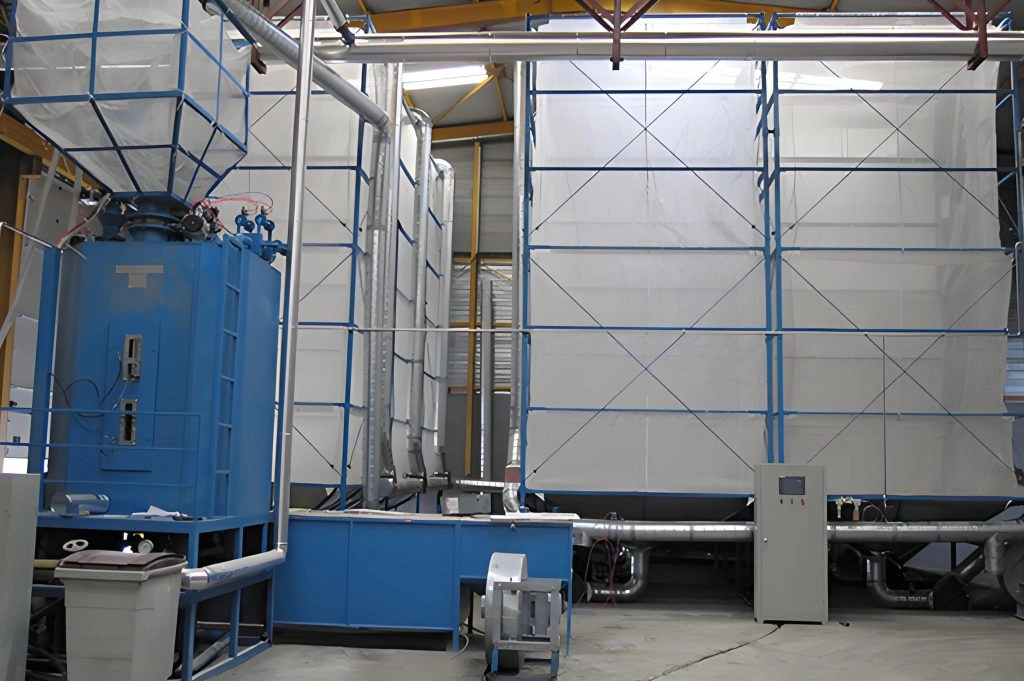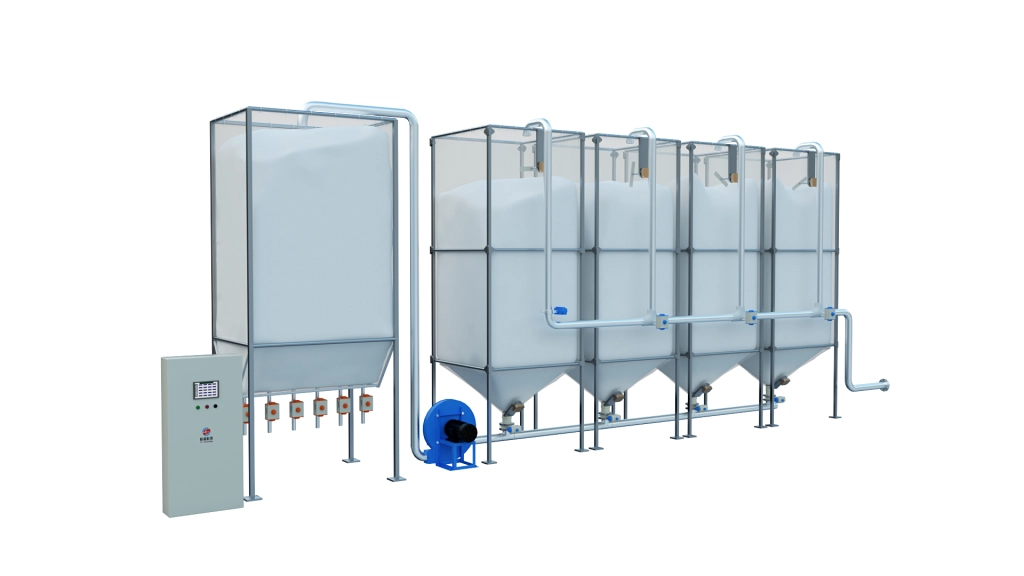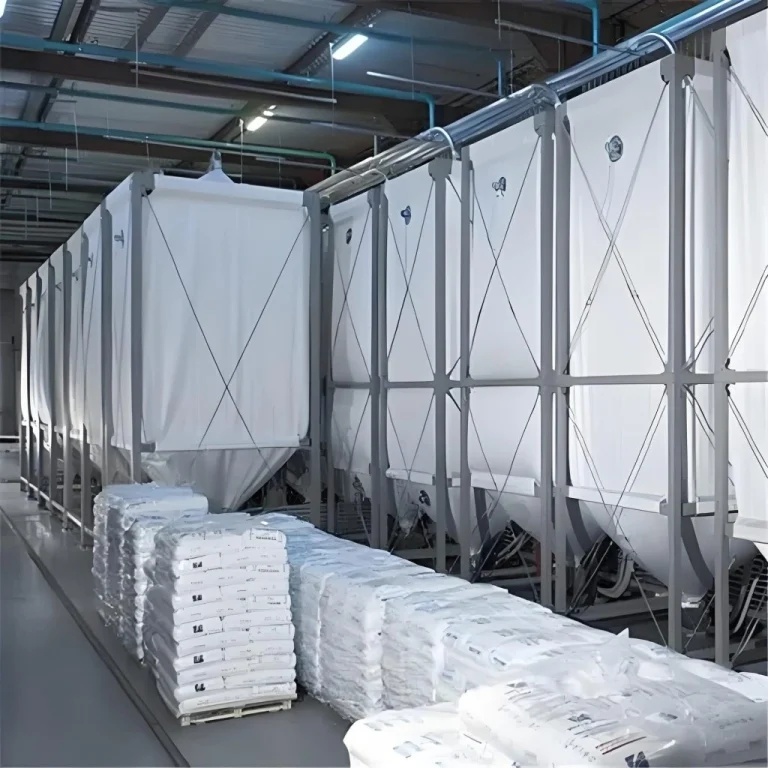Handling expandable polystyrene (EPS) beads is a big deal, but folks often skip over it. Lost foam foundries use these beads to shape fancy foam patterns. These patterns disappear when hot metal gets poured in, making complex metal parts for things like cars, planes, and heavy machines. Issues like beads soaking up dampness, sticking from static, uneven ripening times, or hand-done mistakes can mess up castings, slow things down, or cause safety risks.

Automated EPS beads storage silos solve these problems. They use air-powered moving systems, climate controls, and clever monitoring to make sure beads have the right pressure, stretch, and growth ability. These setups turn a tough job into an easy one, improving quality and work speed.
This guide looks at the many jobs of automated EPS beads storage silos in lost foam foundries. We’ll cover the ripening process, tech features, safety rules, setup tips, and the top 5 benefits that can change how you work. Whether you’re fixing up an existing line or growing your output, understanding these systems is key to making perfect castings and steady growth.
Understanding the Maturation Process in Lost Foam Casting
Why Maturation Matters
Fresh from the pre-expander, EPS beads have low inner pressure from quick steam expansion. This traps pentane gas and makes it hard for beads to bond during molding. Ripening lets air slip into the beads over 8-12 hours—up to 48 hours in cool, wet spots. This evens out pressure and makes beads stretchy for smooth growth in the mold.
Environmental Influences on Maturation
Ripening works best below 30°C with medium dampness. Too much heat makes pentane leak out fast, weakening bonds. High dampness slows ripening and can cause clumping. Automated silos manage these with air vents, keeping bead density steady at 18-22 g/L for lost foam casting.
Transition from Manual to Automated Systems
Old ways used hand-filled silos or mesh bags. These let dirt and uneven conditions affect beads. Automated systems use stainless steel pipes to move beads and bins with separate sections. This lets different bead types ripen together without mixing up.
Technical Features of Automated EPS Beads Storage Silos
Robust Material and Design
These silos are built from anti-static stainless steel. It fights rust and stops sparks from friction during air transport. They hold 10-50 cubic meters per bin, with setups that can include 4-12 bins for busy foundries.
高度な制御システム
A two-screen human-machine interface (HMI) shows ripening timers, bead types, packing thickness, and climate info. Sensors (ultrasonic or capacitive) spot high or low fill levels and switch bins to avoid spills. Programmable logic controllers (PLCs) let you tweak ripening times based on weather.
Energy and Maintenance Efficiency
Fan speed controls and idle-mode sensors save energy. Bolt-connected parts and self-checking software make upkeep simple. Linking with pre-expanders and molders via Ethernet or Modbus cuts cycle times by up to 30%.

Safety and Risk Mitigation in EPS Bead Handling
Eliminating Static Hazards
EPS beads hold flammable pentane. Old PVC pipes could spark from static, risking fires. Automated silos use grounded stainless steel pipes to stop static, following NFPA 77 rules. This skips manual hoses, cutting bead spills and cleanup.
Comprehensive Safety Monitoring
Temperature sensors keep silos below 30°C to stop pentane gas leaks. Gas detectors and auto-shutoff valves seal bins if something’s off. These steps have cut accidents by over 90% in Chinese projects compared to hand-run setups.
Worker Health and Ergonomics
Closed designs reduce dust breathing. Easy HMIs cut physical strain from manual checks. Cleaner work lowers rework from defects, reducing risks like hot metal splashes during pouring.
Integration into Lost Foam Foundry Workflows
Seamless Process Connectivity
Silos sit after the pre-expander in the foam prep zone. They feed molders through auto-diverters, keeping beads clean. RFID-tagged bins track batch details, allowing just-in-time release. This cuts setup time for foundries making varied castings.
Optimizing Energy and Space
Silos reuse heat from pre-expanders for air flow, saving on bills. Stacking bins high saves floor space. HMI data links with ERP systems to predict bead needs and spot slowdowns.
Real-World Performance Gains
Chinese foundry studies show a 6-bin silo setup boosting output by 25% and cutting energy use by 15%. These systems handle test runs or full production, keeping you competitive as demand for precise parts grows.
Top 5 Benefits of Automated EPS Beads Storage Silos for Lost Foam Foundries
Better Bead Quality and Casting Accuracy
Even ripening gives beads balanced pressure. This reduces voids and improves metal fill. Foundries see 40% fewer surface flaws, like holes or bad flows, raising good casting rates.Awesome Safety with Static Control
Anti-static transport stops spark risks. This makes the foam prep area safer and meets tough safety rules, protecting workers and gear.Work Speed and Labor Savings
Touch-free automation cuts labor by 50% and mistakes from oversight. Real-time HMI screens keep things running 24/7, speeding up payback with smooth work.Cost Cuts by Reducing Waste
Precise controls stop water clumping and pentane loss. This saves 20% more usable beads per batch. Less energy and rework lower costs.Growth-Ready for Future Needs
Modular designs and PLC links support bigger volumes. Multi-setting tracking fits different bead types, keeping your setup ready for new lost foam methods.
In short, automated EPS beads storage silos are the backbone of solid lost foam casting. They blend tech, safety, and speed to boost foundry work.
よくあるご質問
Q: How long does EPS bead maturation typically take in automated silos?
A: It takes 8-12 hours, depending on temperature and dampness. Sensors ensure beads are ready.
Q: Are these silos suitable for all lost foam applications?
A: Yes, they handle EPS and copolymers like STMMA. Custom bins fit varied density and pattern needs.
Q: What maintenance do automated silos require?
A: Check sensors and filters every 3-6 months. Self-check software keeps downtime low.
Q: Can silos integrate with existing foundry equipment?
A: Yup, they connect with pre-expanders and molders via Modbus.
Q: How do silos address environmental concerns?
A: They cut waste with precise control and energy-saving designs, making EPS handling greener.
Upgrade Your Foundry: Partner with OC Technology Today
OC テクノロジー is a pro at high-end smart lost foam gear, with a strong record in automated ripening silos. Based in Xindeng Town, Fuyang District, Hangzhou City, our tools deliver top safety, accuracy, and speed.
Ready to improve bead quality and smooth your work? Contact our team 86 15988479417またはメールで zyh@oc-epc.com for a custom consult. Visit www.oc-epc.com for case studies and product details. Get a quote today and change your lost foam production with OC Technology!





